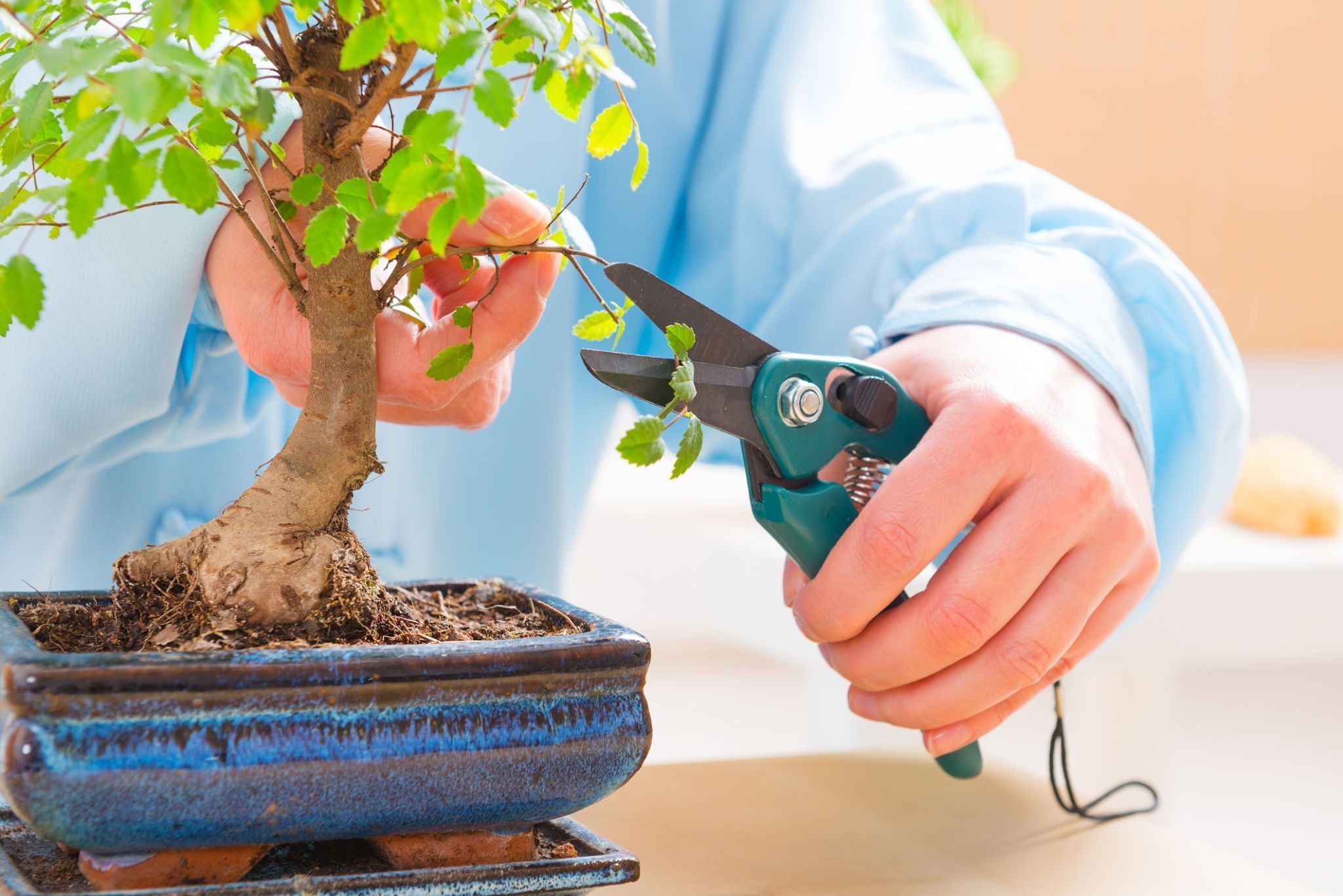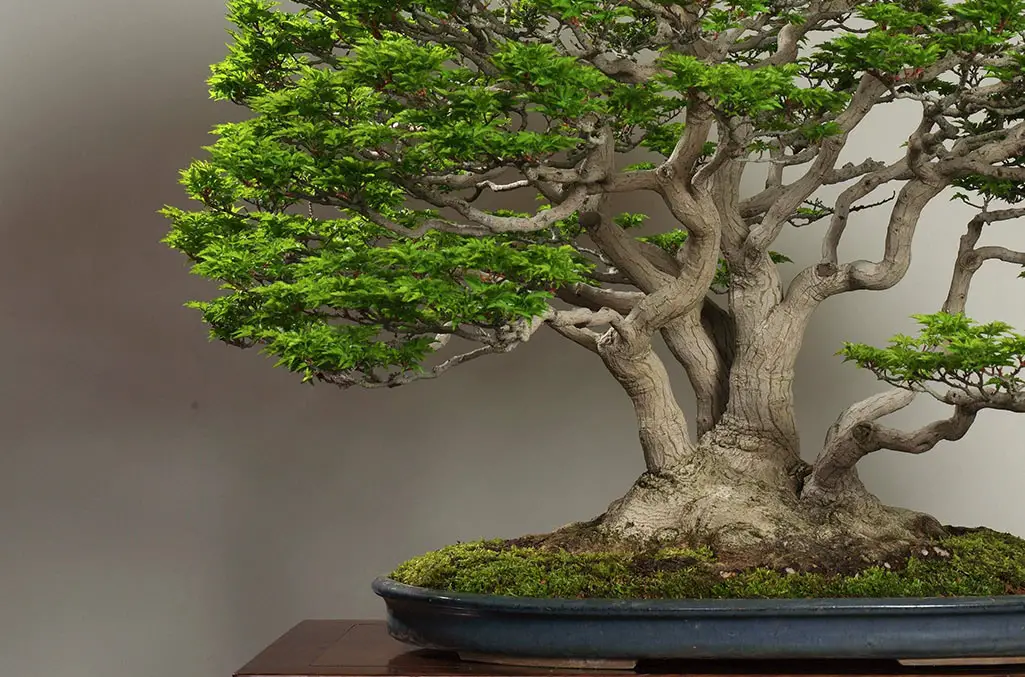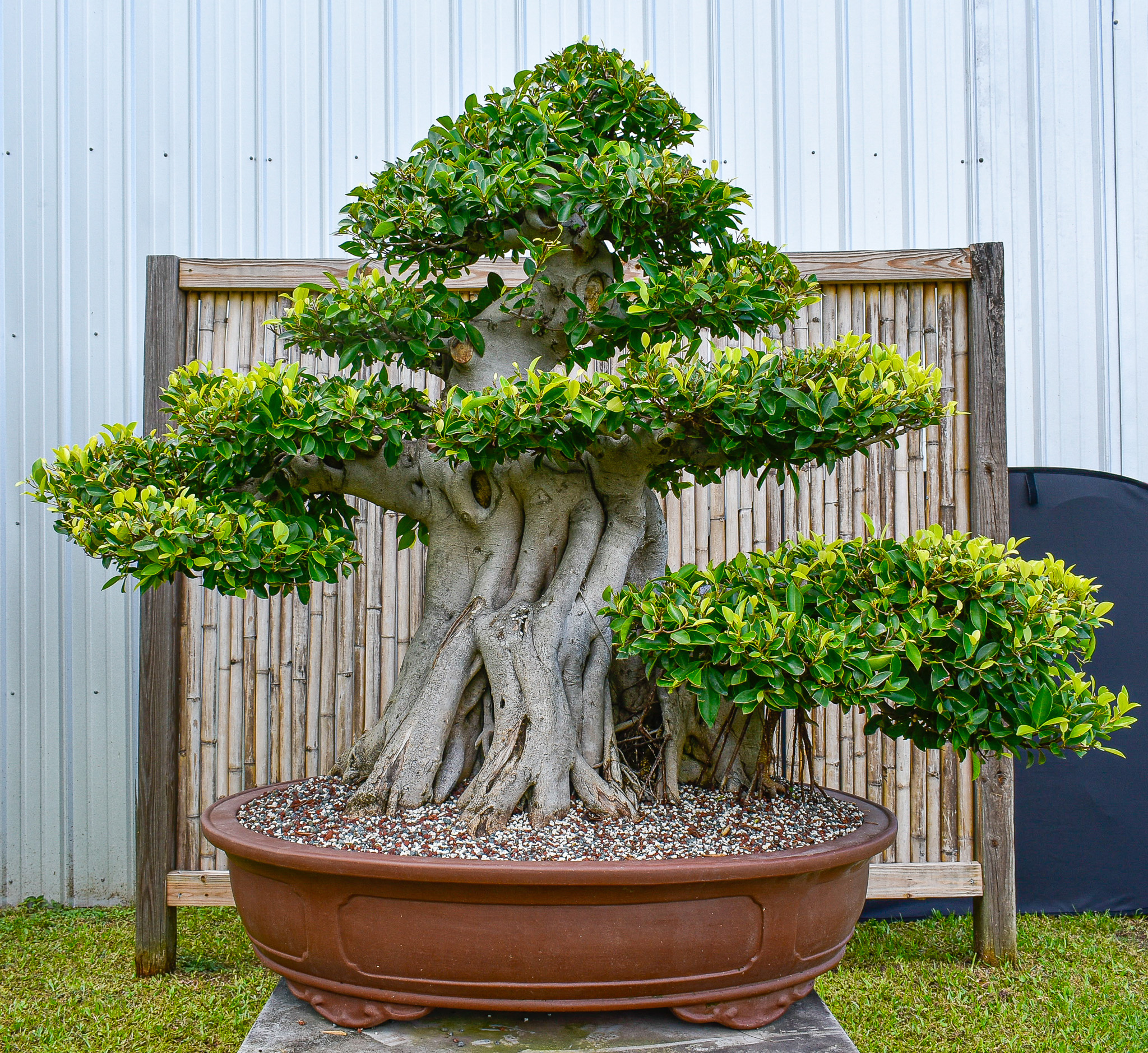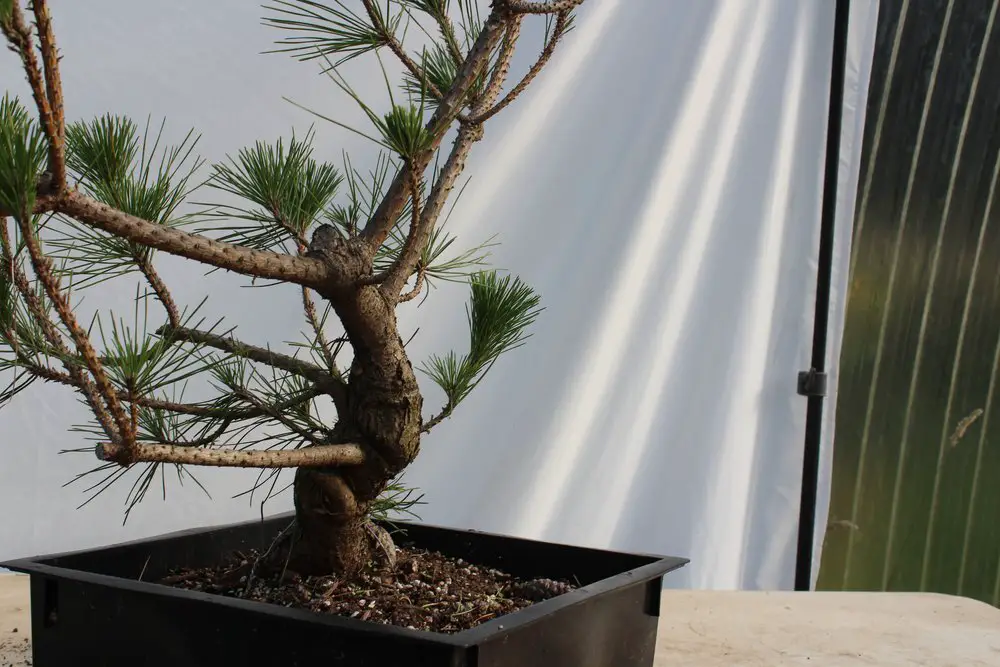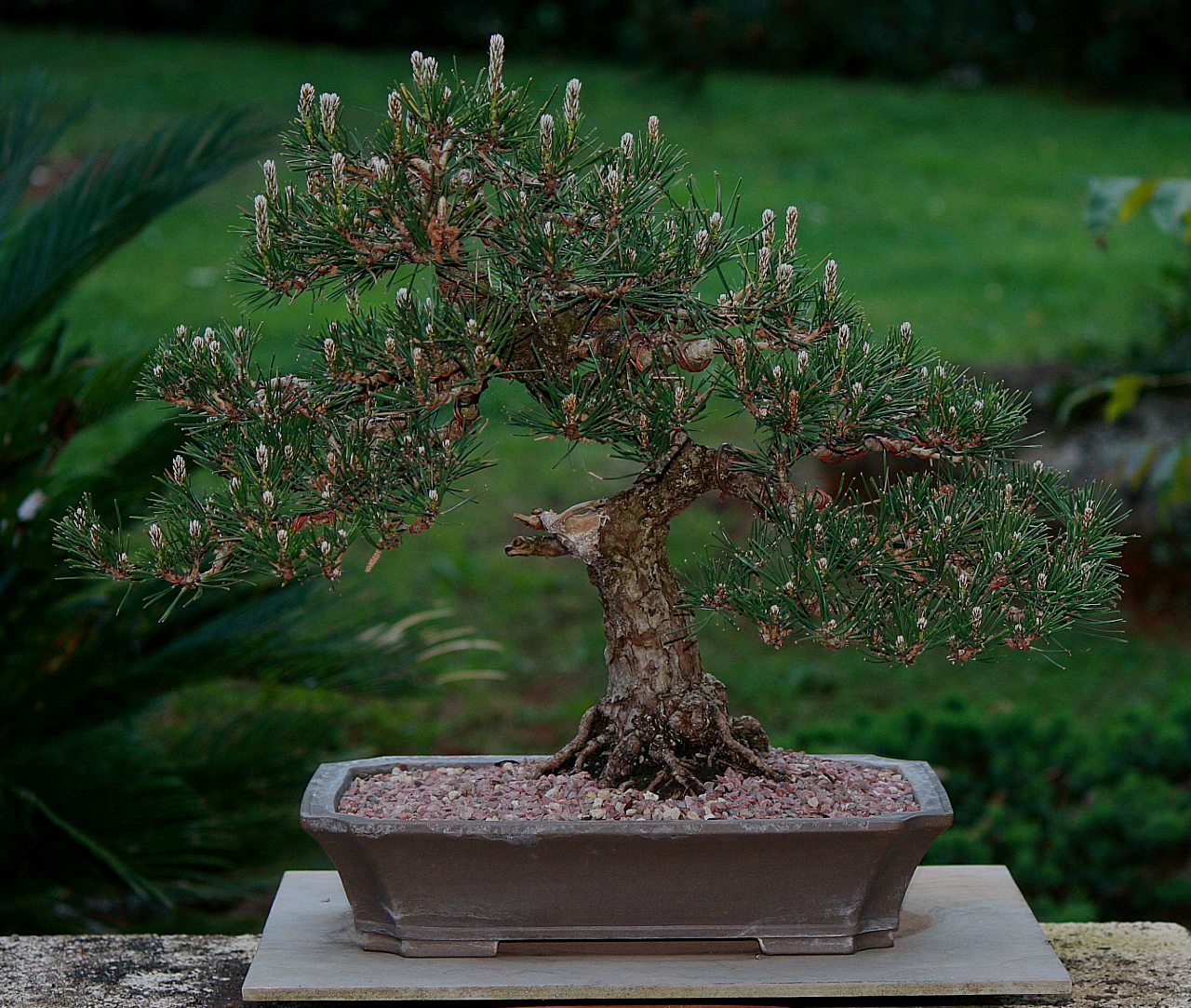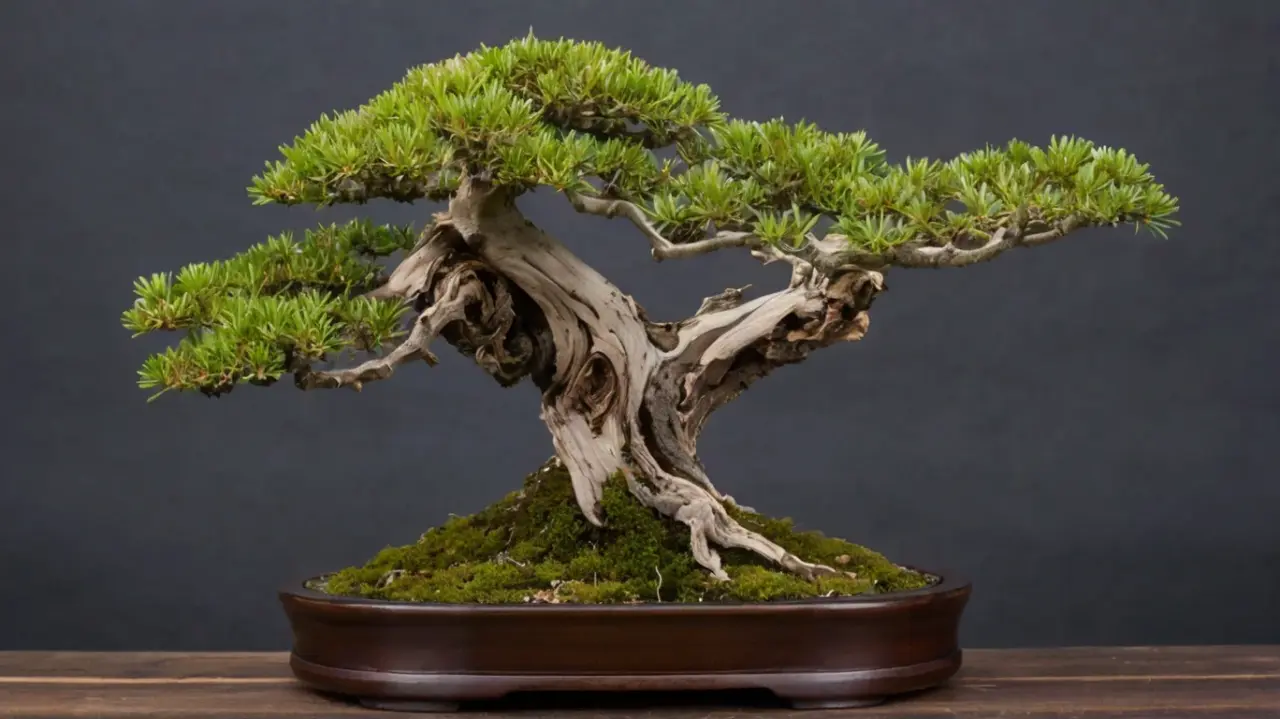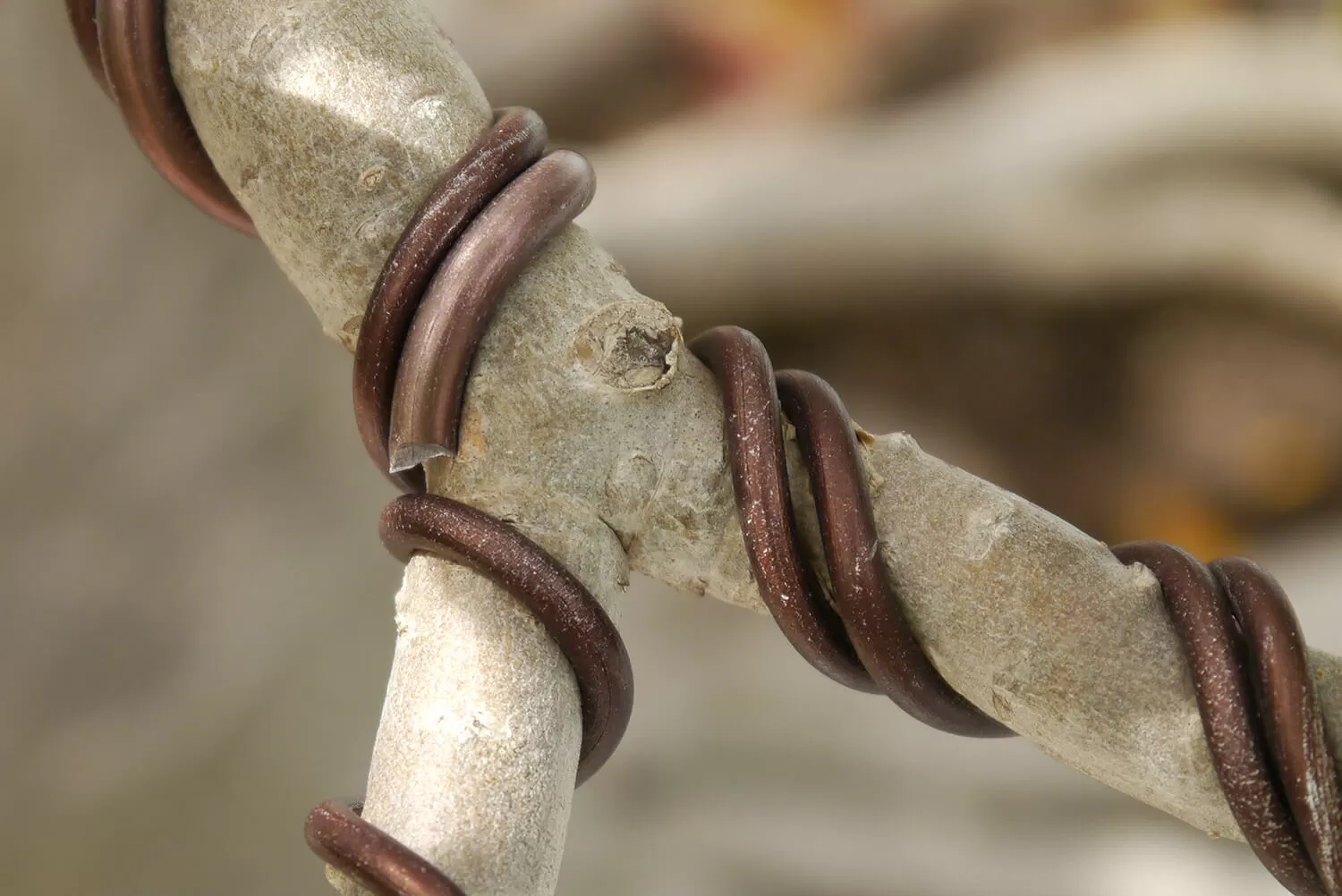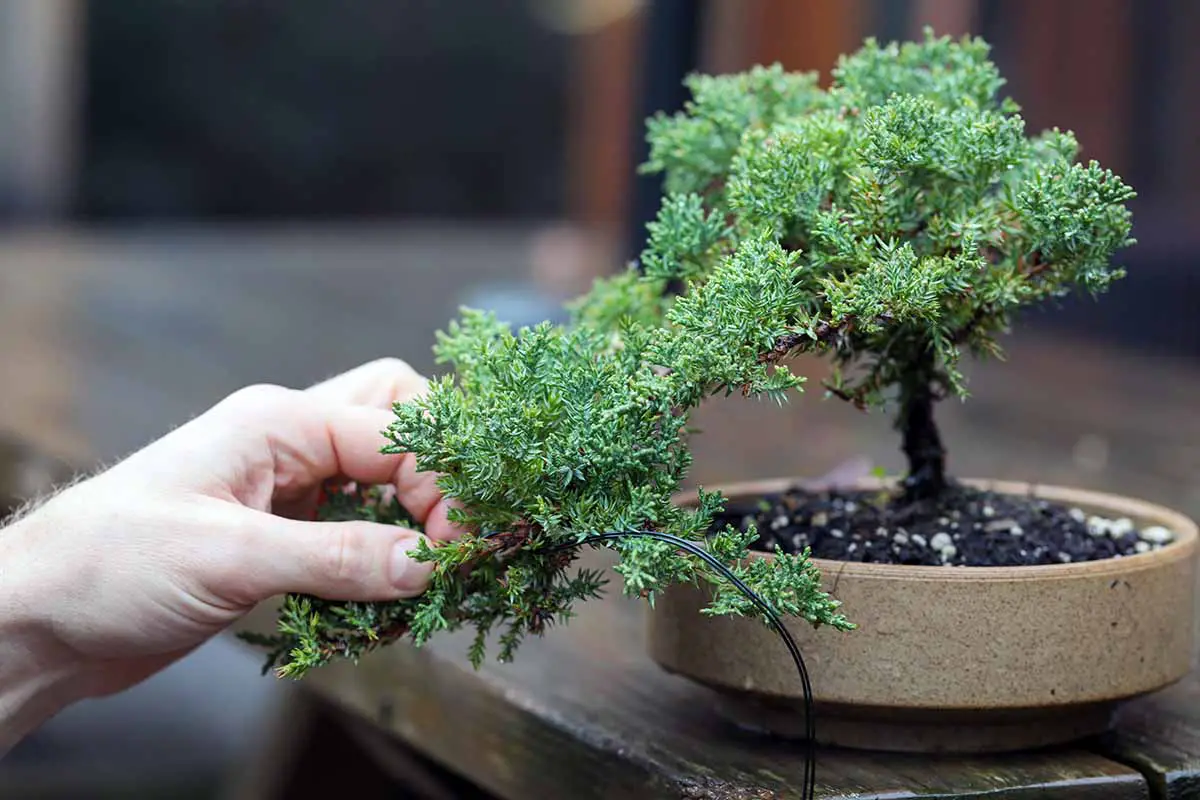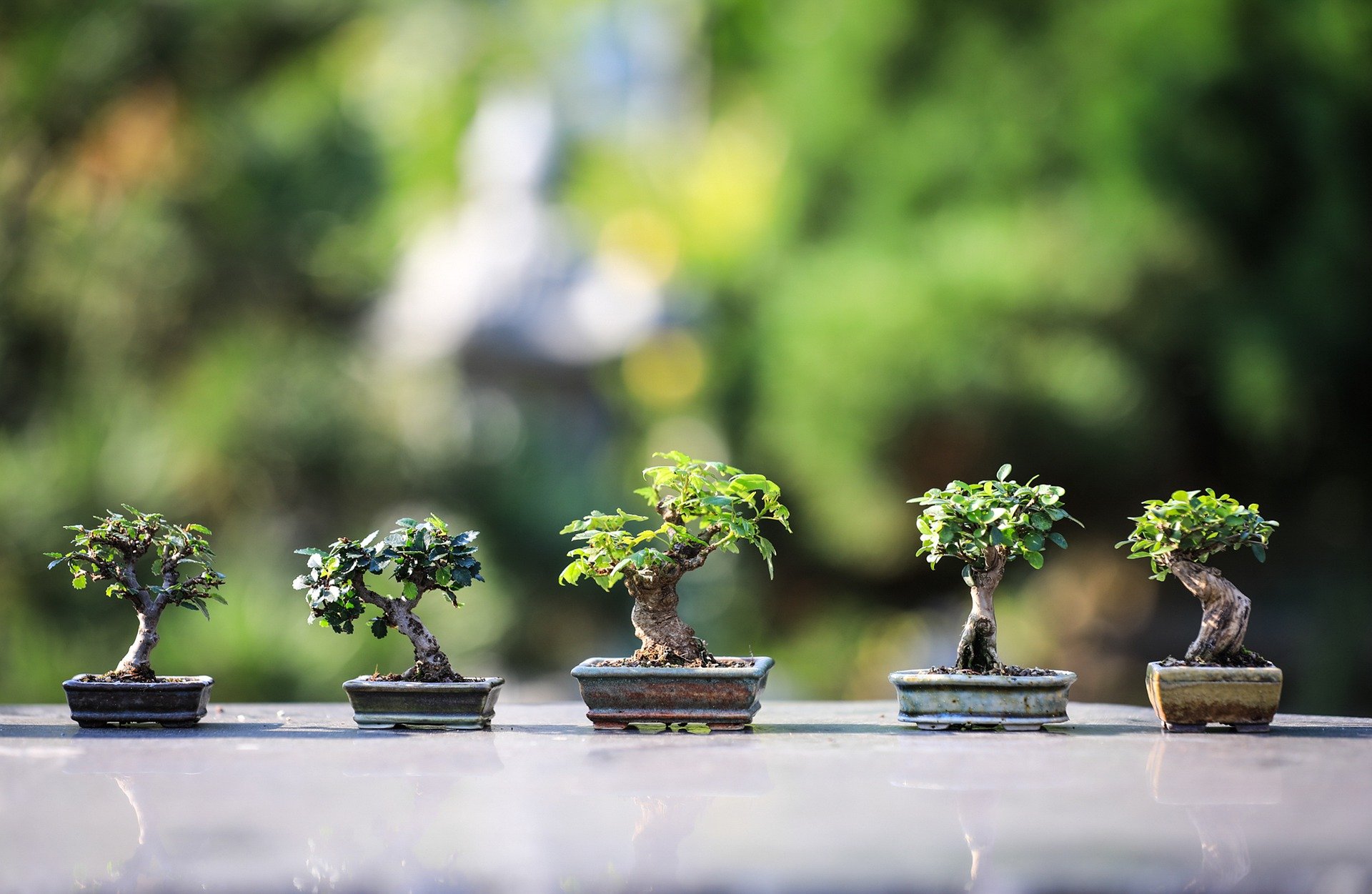Table of Contents
Bonsai defoliation, also known as leaf cutting, is a bonsai styling technique where most or all leaves and the terminal buds at the end of each shoot are cut off using sharp bonsai scissors.
After a few days for some species like elm bonsai, or a few weeks for others like Horse chestnut, the bonsai will start to sprout new buds.
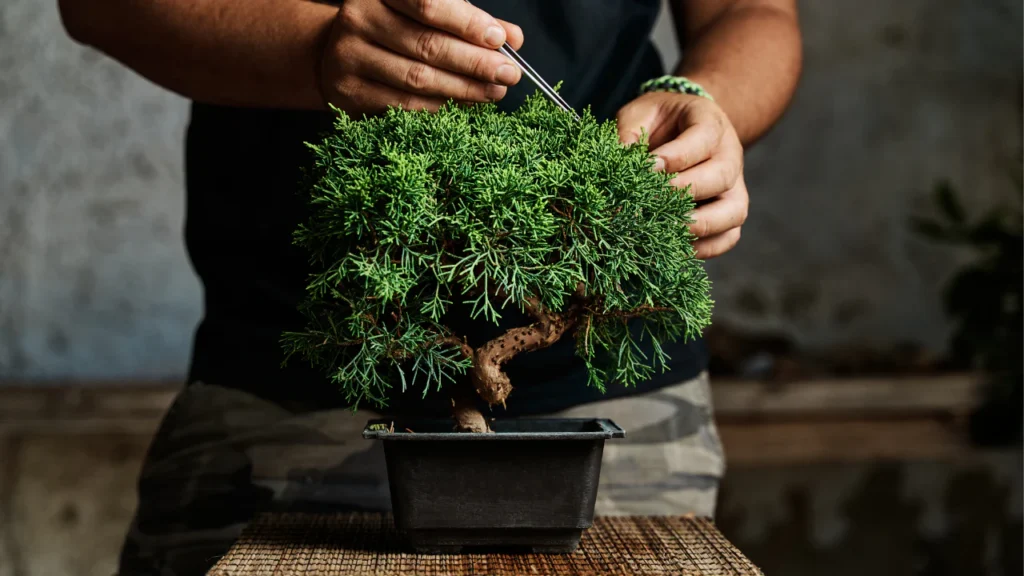
What are Sleeping Buds?
A tree competes with other plants. When a seedling grows, it needs light to grow. The grasses and bushes around the seedling also need light. To get the light it needs and not be overgrown, it has to grow up quickly. To do that fast, the tree grows above all at the top.
Bonsai Cutter
The stronger the tip grows, the more plant hormones it produces, preventing the buds below from growing and sprouting out. The tree doesn’t want to “waste” energy on buds that would get too little light in the grass or under bushes. To survive, the tree must grow large as quickly as possible.
This ability to produce plant hormones to inhibit the buds below is called apical dominance (apex = tip, dominus (or domina) = decision maker). It’s essential for survival in nature but a hindrance for the bonsai stylist.
How to Reduce Apical Dominance in Bonsai
Want to reduce apical dominance? Simple: remove the top buds, also known as terminal buds. It’s like trimming a hedge.
Fewer top buds = fewer inhibitory plant hormones.
Without these hormones, buds start sprouting further down the tree, often in great numbers. This is exactly what bonsai enthusiasts aim for.
Bonsai Defoliation (Tilia)
Bonsai defoliation, or leaf cutting, is a hot topic online, with debates on pros and cons.
For those who defoliate up to 50 bonsai trees a day in a nursery, these arguments can be amusing. It’s straightforward and works well for most bonsai tree species:
- Remove Leaves: Use bonsai scissors for precision.
- Reduce Leaf Size: Encourages finer ramification and better bonsai styling.
- Enhance Appearance: Helps achieve desired bonsai aesthetics.
Bonsai species like Elm, Tilia (Linden), and Maple benefit greatly from this technique.
Bonsai Defoliation: What’s Important?
Choosing the Right Species
Not every bonsai tree can handle defoliation. Deciduous trees like Maple Bonsai, Apple Tree Bonsai, Hornbeam, and Spindle Tree are perfect for this bonsai styling technique.
Tree Health and Timing
Your bonsai must be healthy with strong growth vigor. The best time for leaf cutting is from late June to early July.
Total Defoliation Tips
- Remove all tip buds if you’re doing a complete leaf cut.
Goals of Bonsai Defoliation
- Leaf Size Reduction: This technique helps in reducing the size of the renewable leaves on your bonsai.
- Encourage Bud Sprout: Buds inside the crown will sprout, enhancing the fine ramification of your bonsai.
- Reduce Repotting Shock: By cutting leaves, evaporation decreases, reducing shock during the growing season.
- Ease of Wiring: After summer leaf cutting, wiring a bonsai becomes easier, and the bonsai wire can stay on until next spring.
By defoliating your bonsai, you’re not just improving its looks but also ensuring its health and growth. Use bonsai scissors to carefully trim leaves and watch as your tree transforms. Whether you’re working with an Elm Bonsai, Maple Bonsai, or even a Juniper Bonsai, this technique can elevate your bonsai game.
How Does It Work?
Bonsai defoliation. What’s the deal?
Best time for Bonsai defoliation? Mid-growing season, June to July.
Partial Leaf Cutting:
- All leaves and shoot tips on a branch? Gone.
Complete Leaf Cut:
- All leaves and shoot tips on the whole tree? Gone.
Do it all at once, or take it slow—50% now, 50% in 14 days.
Post-Defoliation Care:
- Lightly shade the bonsai until new buds sprout.
- No fertilising until new shoots start growing. No leaves mean no fertiliser absorption.
- Water less. Fewer leaves mean less evaporation.
Common Mistakes:
- Not removing all leaves during branch defoliation? No new sprouts.
- Not removing all shoot tips? Sprouts only at the tip.
- Defoliating weak trees? They could die or get weaker.
- Over-watering? Roots can rot since there’s less evaporation.
- Defoliating too late? No new shoots this year.
- Cutting leaves in half but not removing them? New shoots may not appear.
Suitable Bonsai Tree Species for Defoliation
When it comes to bonsai defoliation, nearly all deciduous trees with large leaves, like linden, are a great fit.
Healthy, robust plants respond best to defoliation.
Unsuitable Trees for Defoliation
- Conifers: Avoid larch, pine, redwood, and juniper bonsai for this technique.
- Flowering and Fruiting Deciduous Trees: Not ideal candidates.
- Sick and Weak Bonsai Trees: These should never be defoliated.
Best Bonsai Tree Species with Small Leaves and Good Branching
- Pomegranate Bonsai
- Holly
- Cotoneaster
- Ash
- Olives
- Serissa
When working on your bonsai, make sure to use proper bonsai scissors for precise cuts. This helps in achieving the desired leaf size reduction and fine ramification.
Remember, understanding the right species for defoliation, such as the elm bonsai or maple bonsai, can make a big difference in your bonsai styling technique.
▶️Click Here to download this guide as PDF
